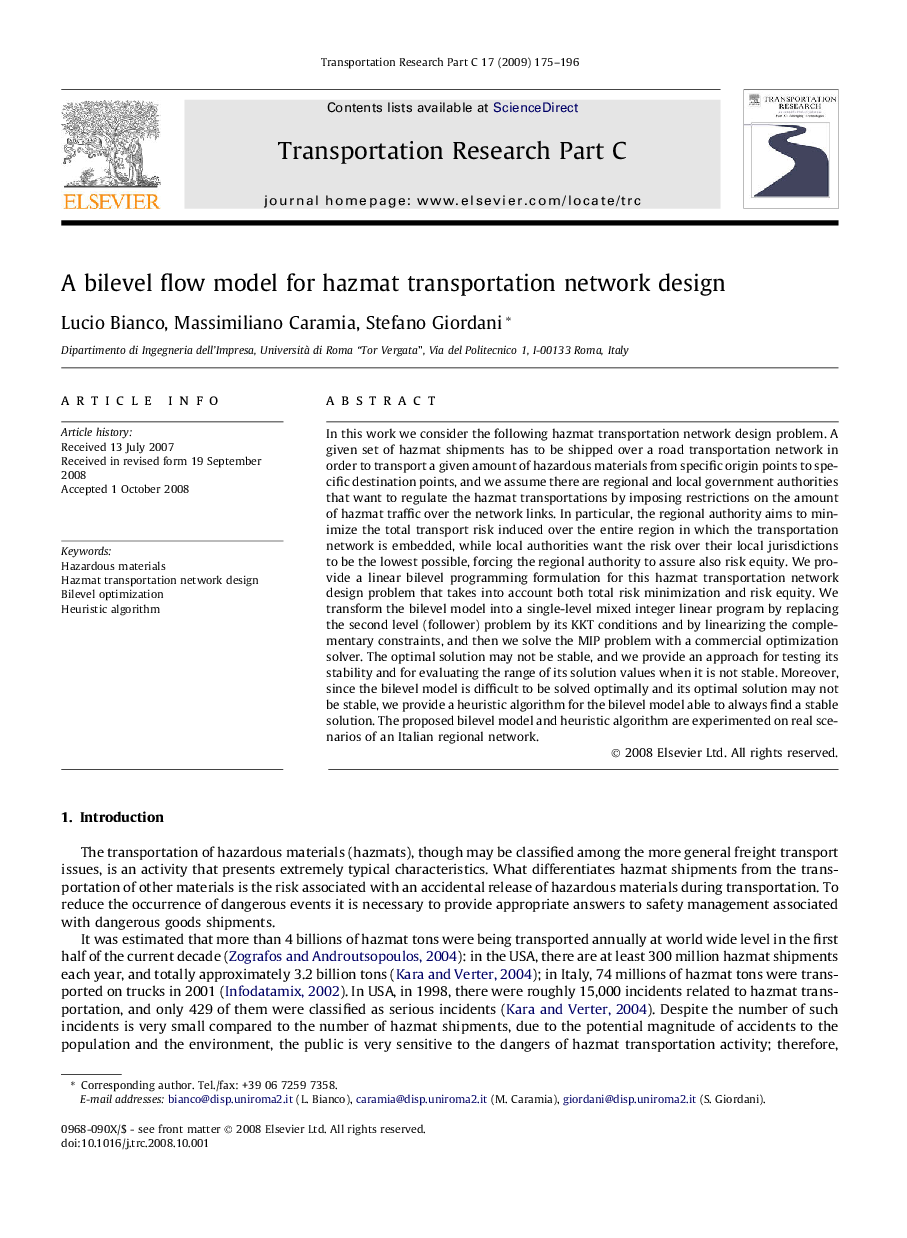| Article ID | Journal | Published Year | Pages | File Type |
|---|---|---|---|---|
| 526671 | Transportation Research Part C: Emerging Technologies | 2009 | 22 Pages |
In this work we consider the following hazmat transportation network design problem. A given set of hazmat shipments has to be shipped over a road transportation network in order to transport a given amount of hazardous materials from specific origin points to specific destination points, and we assume there are regional and local government authorities that want to regulate the hazmat transportations by imposing restrictions on the amount of hazmat traffic over the network links. In particular, the regional authority aims to minimize the total transport risk induced over the entire region in which the transportation network is embedded, while local authorities want the risk over their local jurisdictions to be the lowest possible, forcing the regional authority to assure also risk equity. We provide a linear bilevel programming formulation for this hazmat transportation network design problem that takes into account both total risk minimization and risk equity. We transform the bilevel model into a single-level mixed integer linear program by replacing the second level (follower) problem by its KKT conditions and by linearizing the complementary constraints, and then we solve the MIP problem with a commercial optimization solver. The optimal solution may not be stable, and we provide an approach for testing its stability and for evaluating the range of its solution values when it is not stable. Moreover, since the bilevel model is difficult to be solved optimally and its optimal solution may not be stable, we provide a heuristic algorithm for the bilevel model able to always find a stable solution. The proposed bilevel model and heuristic algorithm are experimented on real scenarios of an Italian regional network.
